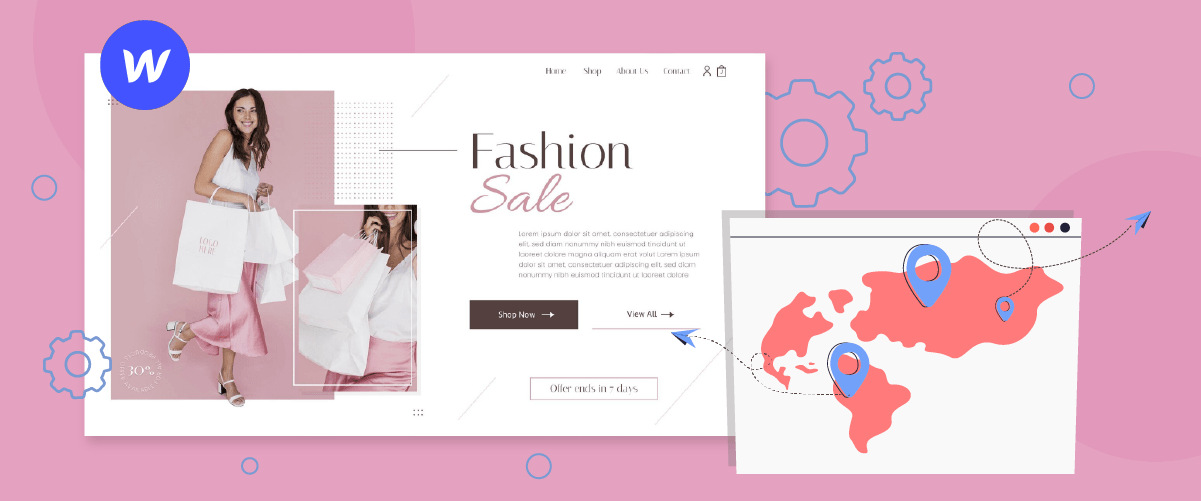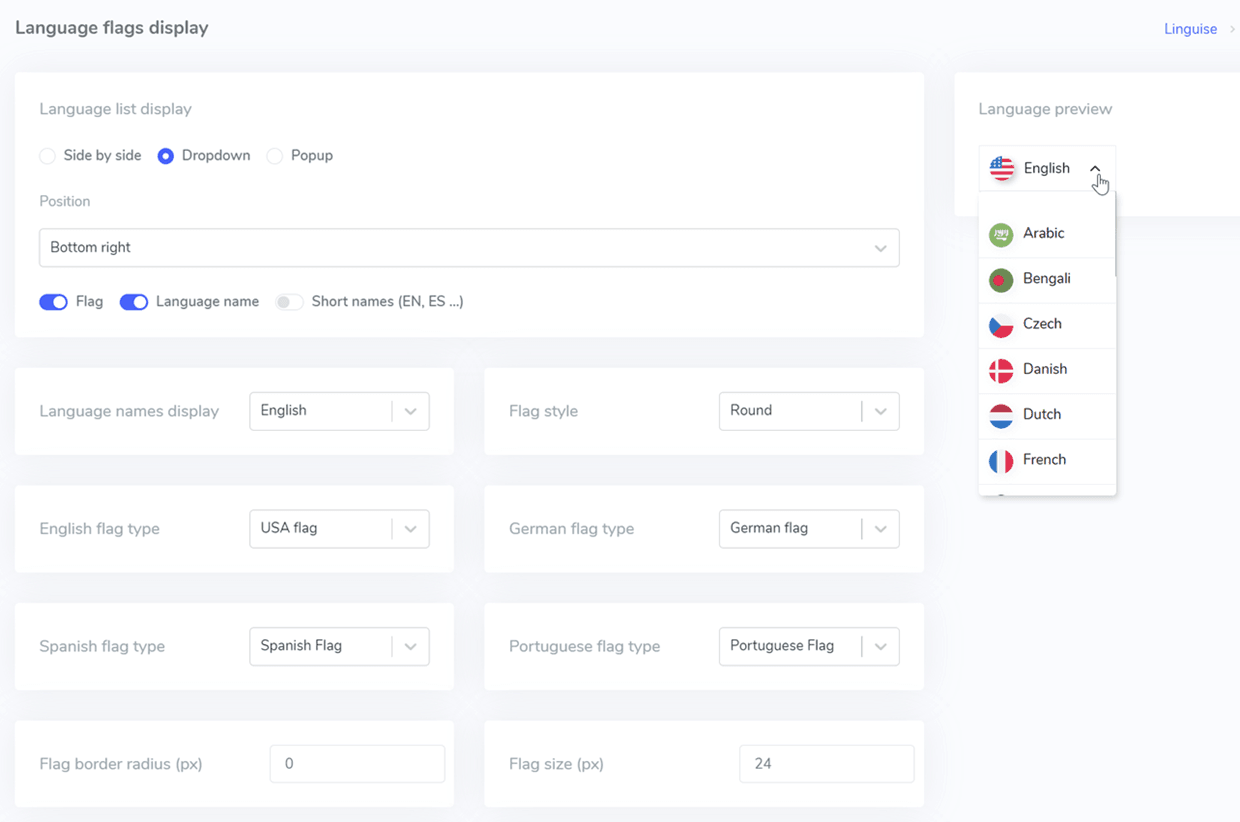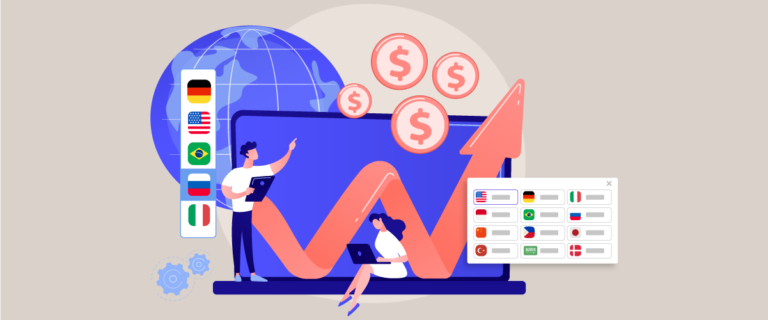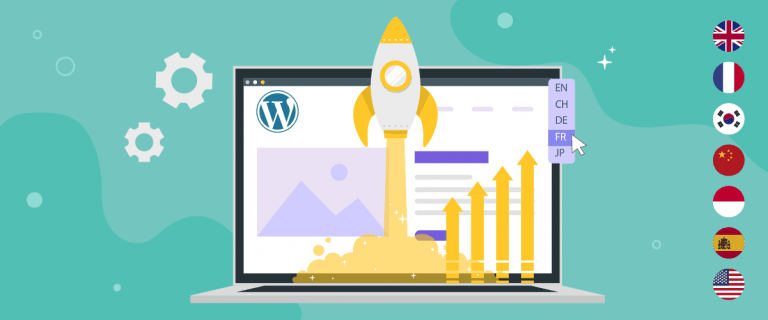Webflow localization alternatives have become increasingly important as more websites seek to reach global audiences. With the release of Webflow’s native localization solution in late 2023, users could add multiple languages to their sites directly within the design editor.
However, while this design-centric approach suits many, it may not fully address the needs of those requiring more advanced features such as collaborative translation management or automatic content detection and translation.
This article explores various Webflow localization alternatives, comparing their features, integration capabilities, and pricing. We’ll examine options like Transifex and Linguise.
What are the best Webflow localization alternatives?
There are many Webflow localization alternatives that you can choose from. This article will discuss 2, Transifex and Linguise automatic translation. Below is a feature comparison table between these three services.
Features | Transifex | Linguise | Webflow |
Native integration | – | – | ✔ |
Multilingual SEO | – | ✔ | ✔ |
Automatic translation | ✔ | ✔ | ✔ (semi-automatic) |
Media translation | ✔ (with exceptions) | ✔ | Available on Advanced plan ($29 /locale/month) |
Collaboration translators | ✔ | ✔ | Available on Advanced plan ($29 /locale/month) |
Localized URLs | ✔ | ✔ | Available on Advanced plan ($29 /locale/month) |
Exclude translation | Manual | ✔ | Available on Enterprise plan (custom) |
Free trial | 15 days | 30 days (600.000 words) | – |
To find out more details regarding the differences above, let’s discuss them one by one below.
Webflow localization
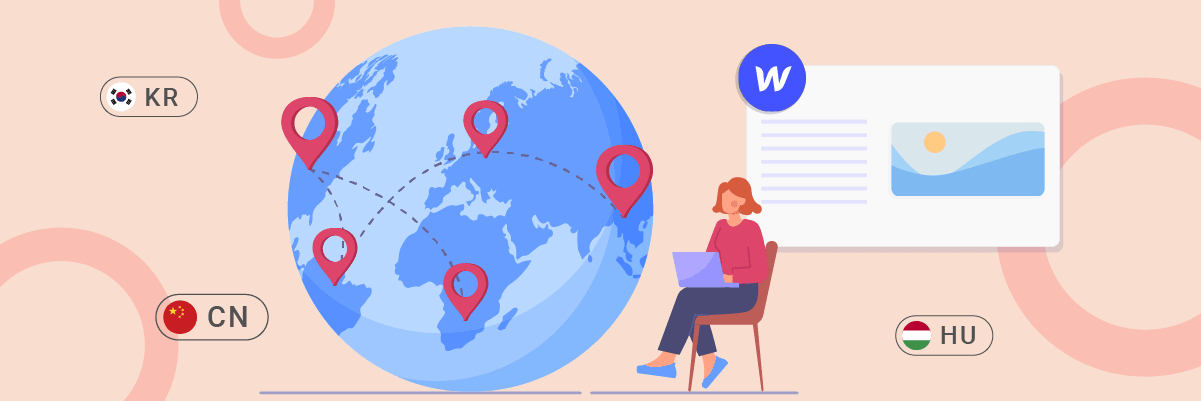
Webflow is a visual web design platform that allows users to create responsive websites without coding. It offers a range of design tools, and hosting services, and now includes native localization features for building multilingual websites.
Integration
Webflow’s localization feature seamlessly integrates into its platform, allowing users to design, build, and localize translated sites directly within the Webflow designer. The setup process is straightforward and accessible through the dashboard settings. Webflow uses the term ‘locales’ for languages, with the original site language being the ‘primary locale’ and additional languages as ‘secondary locales’.
However, it’s important to note that the entire website must be translated when publishing a new language version. There’s no option to exclude specific pages from translation.
Multilingual SEO
Webflow Localization supports multilingual SEO best practices by automatically adding HTML lang tags, page-level tags, and sitemap hreflang tags to your locales. These tags help search engines recognize that your website is available in multiple languages and isn’t duplicate content.
Users can also manually translate title tags and meta descriptions to further optimize for multilingual SEO. Additionally, Webflow offers locale routing, which can direct visitors to their preferred language version based on browser settings.
Semi-automatic translation
Webflow provides a semi-automatic translation feature using machine translation. However, this process requires manually selecting each element on CMS or static pages individually and clicking the automatic translation option.
This approach lacks automatic content detection and centralized management of translations. Users must factor in the manual translation process for each new page or content update, which can be time-consuming for large websites.
Localization management
Webflow’s localization management features are relatively basic. Users can integrate third-party translation management systems (TMS) at an additional cost for more advanced translation management.
It’s noteworthy that editing translations is only possible through the design editor. Additional team member seats must be purchased on top of the Webflow Localization and site plans to allow team members like content creators, access to translations.
Media translation
For media localization, Webflow allows users to replace original images with translated versions and update alt text across all locales directly within the design editor. This feature provides flexibility in adapting visual content for different markets.
However, this capability is only available on the Advanced plan and above, which may limit access for users on lower-tier plans.
Pricing
Webflow Localization offers tiered pricing plans starting at $9 per language (locale) per month, allowing up to 3 languages. At $29 per locale per month, the next tier supports up to 5 languages and includes additional features like translated URLs and media translation.
For users requiring more languages or advanced localization capabilities such as block exclusion and translation glossaries, Webflow offers a custom Enterprise plan. It’s important to note that no free plan is currently available for Webflow Localization.
Transifex
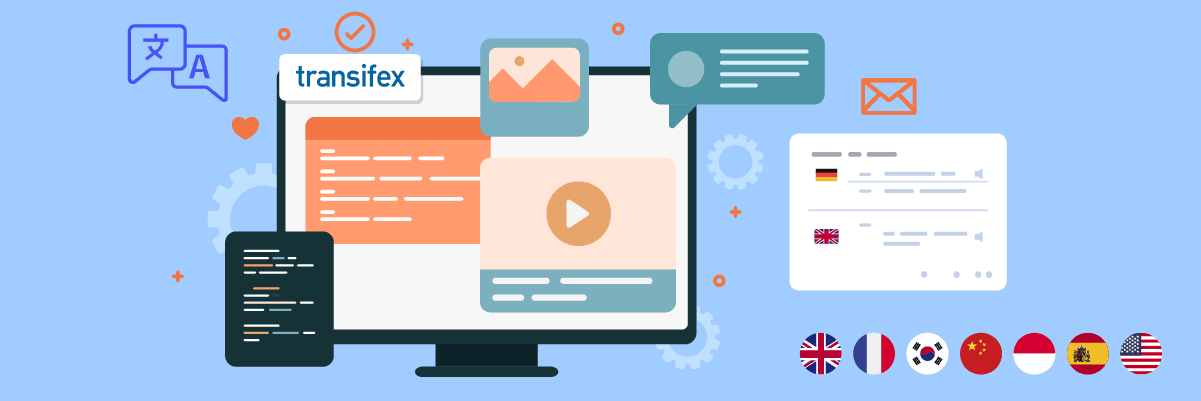
Transifex is a cloud-based translation and localization management platform that enables continuous localization of websites, including those built with Webflow. It supports over 450 languages and focuses on AI-powered localization to adapt content to evolving cultural preferences and colloquialisms.
Integration
Transifex integrates with Webflow websites using Transifex Live technology. The integration process involves adding a JavaScript snippet to your Webflow site. While not as straightforward as some alternatives, this method allows for real-time localization.
Users should be prepared for a slightly more technical setup compared to native Webflow localization or some other alternatives.
Localization management
Transifex offers powerful localization management features. Users can localize content directly within the context of their Webflow website, providing a live preview of edits. The platform’s CAT Editor allows translators to work efficiently without navigating files.
Content exclusion is possible, enabling strategic localization rather than translating the entire website. Transifex also offers instant machine translation through its Machine Translation Fill-up feature, particularly useful for large websites.
Collaboration with translators
Transifex excels in collaborative features. Users can add translators to their team, assign roles, and control access permissions. This setup allows for asynchronous work and progress tracking, ensuring projects stay up-to-date.
The platform also facilitates inviting language service providers directly into projects. For smaller tasks, integrated machine translation services are available. Additionally, Transifex offers tagging features to organize and prioritize translation strings, enhancing workflow efficiency.
Pricing
Transifex offers a 15-day free trial and the option to request a personalized demo. Their paid plans start at $90 monthly, designed for companies beginning their localization journey.
The starter plan includes access to 50,000 words, a basic version of their Translation Memory, machine translation capabilities, collaboration tools, and an online editor. For more specific pricing information or advanced features, users are encouraged to contact Transifex directly.
Compare between Webflow and Transifex
Features | Transifex | Webflow |
Native integration | – | ✔ |
Multilingual SEO | – | ✔ |
Automatic translation | ✔ | ✔ (semi-automatic) |
Media translation | ✔ (with exceptions) | Available on Advanced plan ($29 /locale/month) |
Collaboration translators | ✔ | Available on Advanced plan ($29 /locale/month) |
Localized URLs | ✔ | Available on Advanced plan ($29 /locale/month) |
Exclude translation | Manual | Available on Enterprise plan (custom) |
Free trial | 15 day | – |
Linguise automatic translation, solution for localized Webflow website
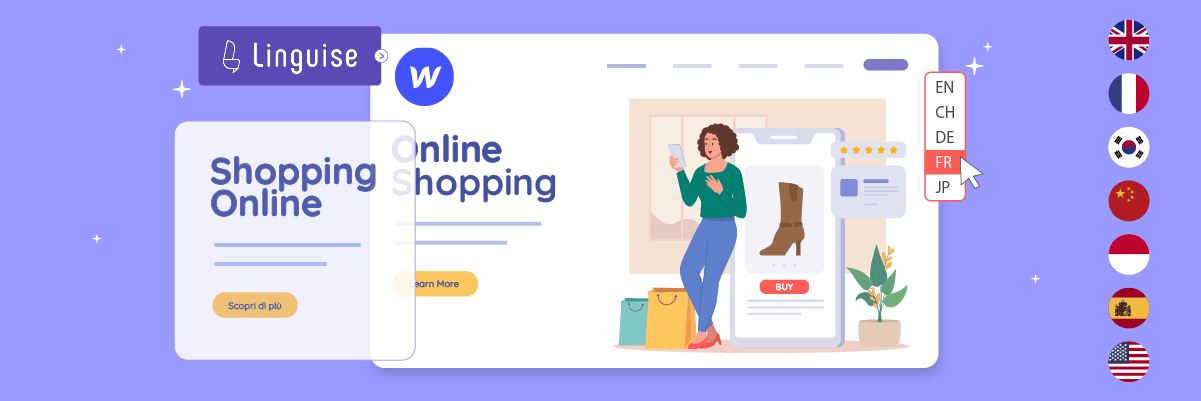
Linguise is an automatic translation platform designed to make it easier to localize websites, including those built with Webflow. This service offers various features to optimize the translation process and increase the visibility of multilingual websites.
Integration
Linguise integrates with various web builders, including Webflow. The integration of Linguise with Webflow is designed to be simple and efficient. This process typically involves adding a small script to your Webflow site, which can be easily done through the Webflow interface.
Once integrated, Linguise works seamlessly in the background, detecting and translating content automatically without modifying the original site structure.
Multilingual SEO
Linguise offers robust support for multilingual SEO. The platform automatically generates optimized URLs for each language version of your site, adds the necessary hreflang tags, generates multilingual sitemaps, and translates metadata.
These features help search engines understand the multilingual structure of your site, improve rankings for searches in specific languages, and avoid duplicate content issues.
Automatic detection & translation
One of Linguise’s main advantages is its ability to detect and translate content automatically. The system intelligently identifies new or updated content on your site and immediately translates it into all configured languages.
This approach saves significant time and ensures that all language versions of your site remain synchronized without constant manual intervention.
Localization
Linguise provides comprehensive localization tools to refine automatic translations. Users can customize translations to reflect cultural nuances and language preferences using the live editor, which allows editing of automatic translation results for greater accuracy.
The platform also lets users exclude specific elements from translation, whether by URL, pages, or words. This ensures that sensitive content or branding remains consistent across all language versions.
Collaboration with translators
Although Linguise prioritizes automatic translation, the platform also supports collaboration with human translators. You can invite professionals and setup access for translators to review and refine automatic translations.
Both you and the translators can improve translations using the front-end live editor feature, ensuring higher accuracy and quality.
Media & external link management
The platform can automatically translate image alt text and allows users to replace images with culturally appropriate versions for specific target languages.
For external links, Linguise can configure them to direct to the corresponding language version of the linked site, if available, enhancing the overall user experience.
Pricing
Linguise offers a free 30-day trial with a translation limit of up to 600,000 words. During this trial, you can access all features without any restrictions. After the first month, you can upgrade to a paid plan, with three packages starting from $15 per month.
Compare between Webflow and Linguise
Features | Linguise | Webflow |
Native integration | – | ✔ |
Multilingual SEO | ✔ | ✔ |
Automatic translation | ✔ | ✔ (semi automatic) |
Media translation | ✔ | Available on Advanced plan ($29 /locale/month) |
Collaboration translators | ✔ | Available on Advanced plan ($29 /locale/month) |
Localized URLs | ✔ | Available on Advanced plan ($29 /locale/month) |
Exclude translation | ✔ | Available on Enterprise plan (custom) |
Free trial | 30 days (600.000 words) | – |
Why Linguise is the best Webflow alternative for localized your website?

Now you know each feature of Webflow, Transifex, and Linguise. Each service certainly offers its own advantages and disadvantages.
However, why is Linguise’s automatic translation service one of the best alternatives for Webflow localization? Just take a look at the following explanatory points.
Integrated with more than 40 CMS & web builder
- Compatible with various CMS including Webflow, WordPress, Shopify, WooCoomerce, OpenCart, etc.
- Works with all types of websites, including statistical and dynamic sites
- Supports integration with various third-party plugins and applications
Many languages are available and switcher customization
- More than 85 language options are available.
- Features easy language switcher customization positions via the dashboard (config buttons, flags, language names, etc).
Automatic translation & perfect for quality
- Automatic translation using advanced AI
- The quality of the translation results is up to 97%, similar to human translation.
- Option to edit and improve translations manually using front-end live editor
100% support multilingual SEO
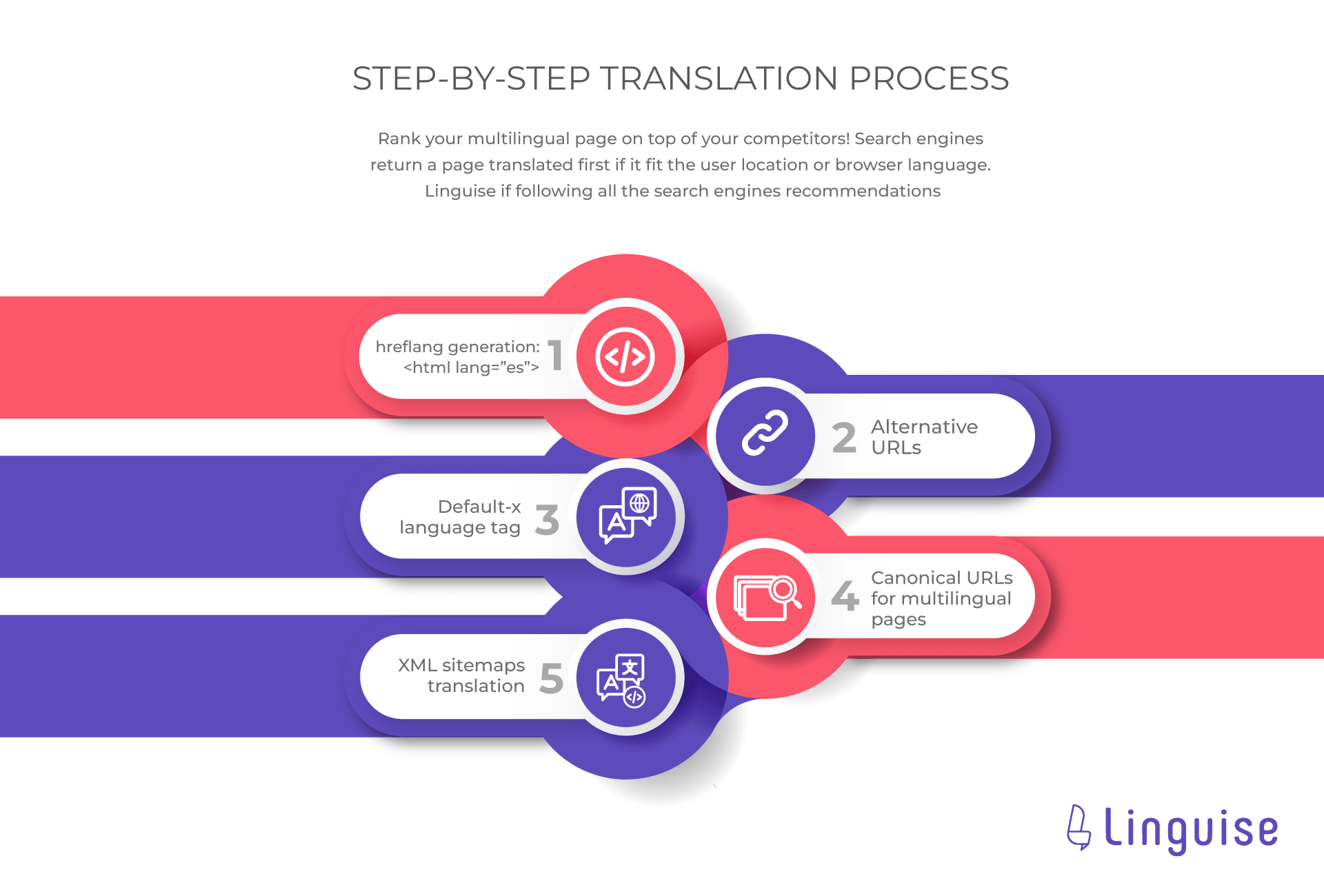
- Generates optimized URLs for each language
- Helps translate metadata to improve search rankings
- Generate multilingual sitemaps
- Automatic canonical URLs and hreflang tags
Localized your content and media
- Translates all types of content, including dynamic content
- Option to change images and media according to target language
- Proper adaptation for formats such as RTL (Right to Left) language like Saudi Arabia
Translation exclusion
- Ability to load specific elements or pages from translations based on URL, page, phrase
- Flexibility in managing content that does not need to be translated
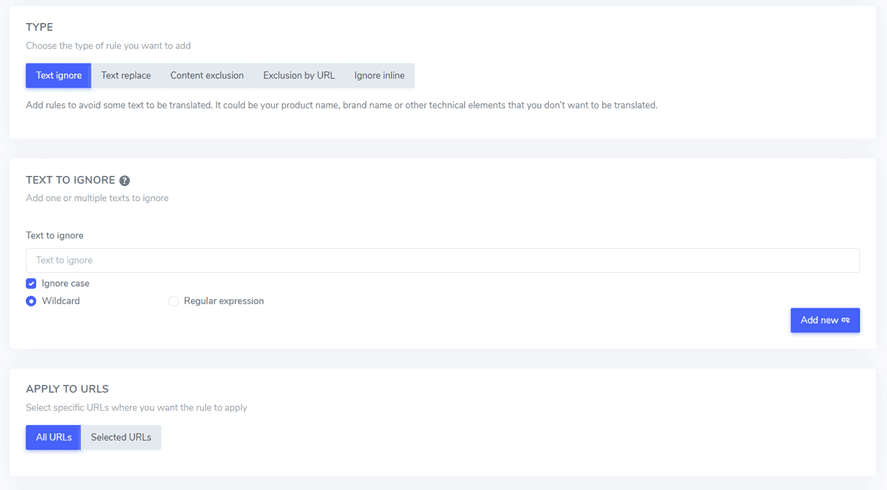
Able to collaborate with translators
- Possibility to invite several translators
- Set the access rights of each translator according to the language translation.
- Team collaboration feature with translators via live editor
- Dashboard features that every translator understands
Conclusion
You can use various Webflow localization alternatives, such as Linguise, which offers a more comprehensive solution. While Webflow provides built-in localization features, Linguise stands out with its advanced automatic translation capabilities, strong multilingual SEO support, and flexibility in managing local content.
Features like automatic content detection, easy exclude translation, and efficient team collaboration make Linguise a more appealing choice for many web developers. Considering the ease of integration, compatibility with various CMS platforms, including Webflow, and competitive pricing, Linguise can be a great alternative to Webflow’s native localization. So why wait? Sign up for a Linguise account and take advantage of the 30-day free trial before subscribing!

